The I-Pace Is the Most Compelling Jaguar Since the E-Type

In March 1961, Jaguar unveiled a revolutionary new sports car called the E-Type. Perhaps you’ve heard of it. Maybe you've also heard the oft-repeated story of when Enzo Ferrari himself first laid eyes on the car and promptly declared it the “most beautiful” in the world.
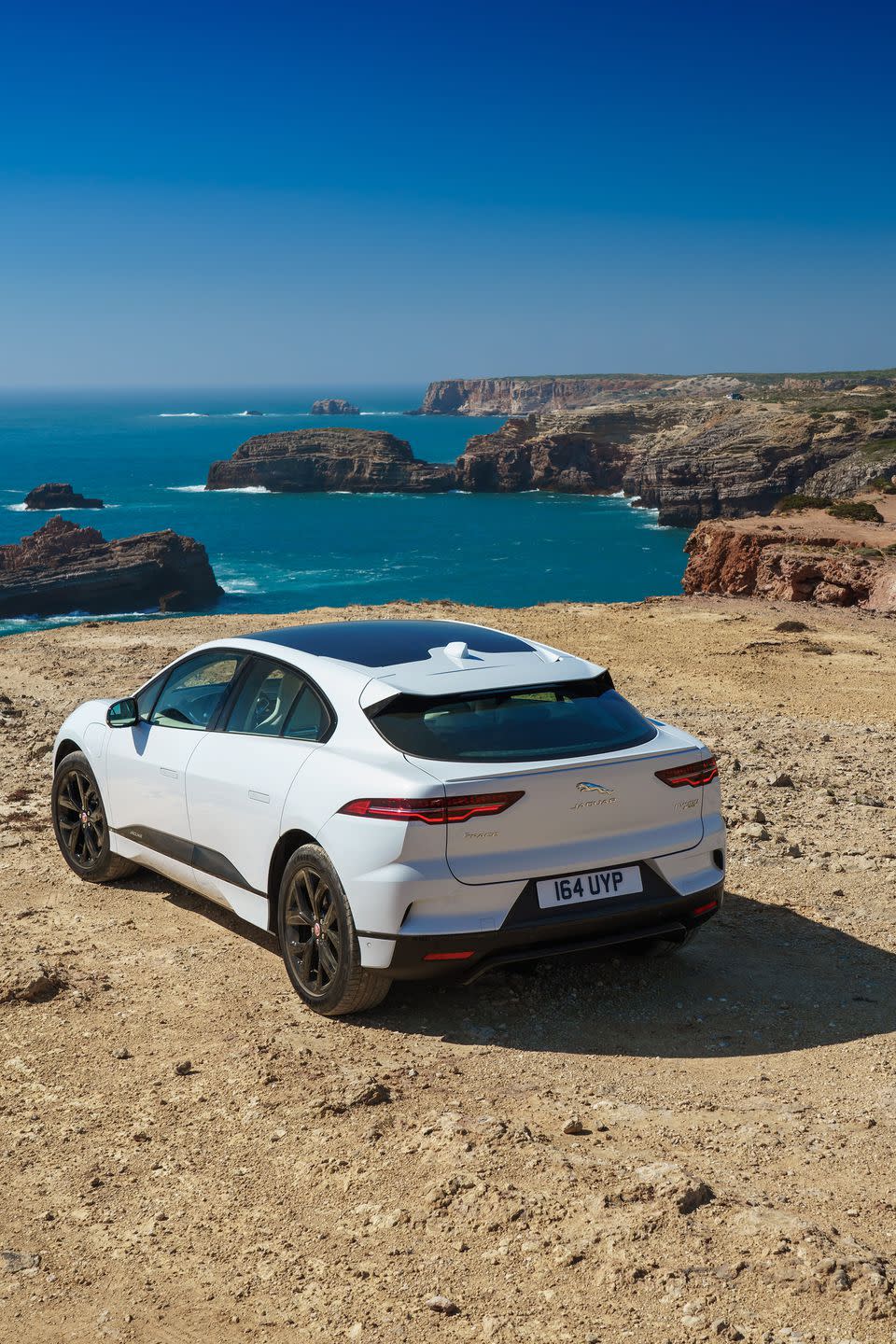
What's funny is that the guy who shaped the E-Type, Malcolm Sayer, didn’t consider himself much of a designer at all. Sayer was a trained aerodynamicist, thinking deeply about how cars traveled through the wind long before that sort of thing was standard practice. That the E-Type was so pretty was largely a result of some advanced mathematics-not so much the search for aesthetic glory.
Sayer’s name came up in conversation with Jaguar Production Studio Director Wayne Burgess at Portimao Circuit in Portugal, where the British automaker was launching its newest car, the I-Pace. A car that looks nothing like the voluptuous E-Type. To Burgess, though, there's an important commonality between the two.
“The E-Type was a product of [Sayer’s] aerodynamic knowledge,” Burgess said. “The I-Pace is very much a product of our current aerodynamic knowledge and thinking. And it's interesting that it spits out a very different looking vehicle, but for very good reasons, you know?”
The I-Pace needs to slice through the air as cleanly as possible, without generating lift. Why? It's Jaguar's first all-electric car. It's also the first Jaguar since the E-Type that captures the same unfettered ambition.
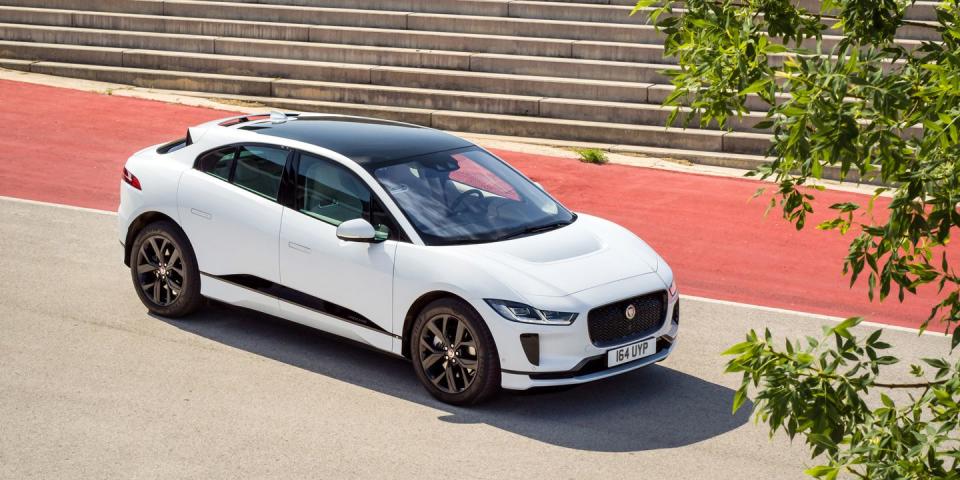
In person, the I-Pace is easily one of the most striking cars on sale, its lines a product of aerodynamics, and the unique qualities afforded to Jaguar by the creation of a bespoke electric-car platform.
"[Ian Callum, Jag’s design director] said the opportunity that we've got with the electric vehicle platform is we can move all of the building blocks," Burgess told me. "We can put the cabin where we want. We don't have the internal-combustion engine pushing the screen back. We can put the overhangs where we want.
"It really was, 'Okay, well what do we want to do?'" The striking answer was the first cab-forward production Jaguar ever.
The I-Pace looks quite a lot smaller on the road than in pictures-Burgess told me that pushing the big wheels out to the corners trick your eyes into seeing a larger car. Burgess likes to put things into perspective by saying the I-Pace is about the same size as a Porsche Macan while offering similar interior space as Jaguar's own XJ long wheelbase.
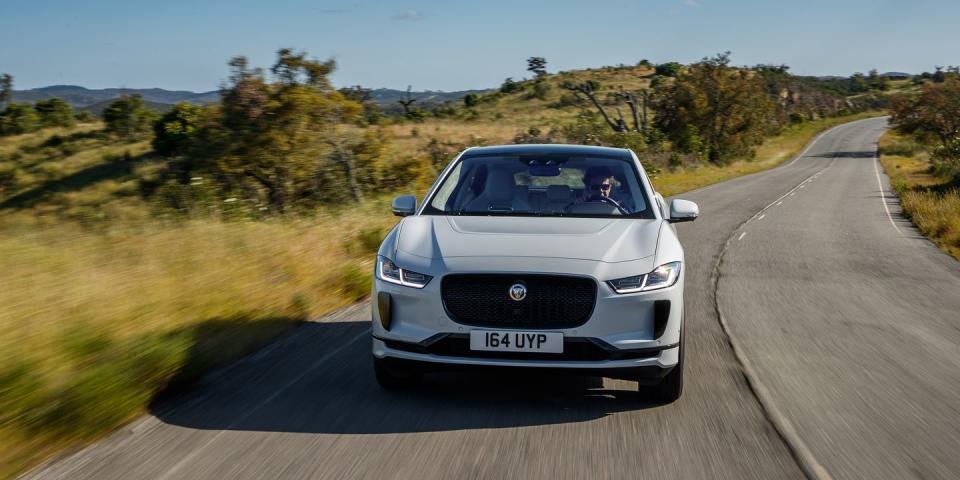
On the road, it feels quite compact, and a hell of a lot lighter than its quoted 4784-pound curb weight suggests. Jaguar set us on a route of narrow, technical mountain roads for our drive, and even threw in a few laps of the tricky Portimao circuit, to prove the I-Pace's sporting credentials.
The I-Pace comes standard with height-adjustable air suspension, and the multiple test cars we drove were equipped with optional $700 adaptive dampers. They work fabulously. When it's at its best, Jaguar tunes its cars with a beautiful mix of supple ride quality and superlative handling, and that's the case here. The double-wishbone front suspension of the I-Pace is derived from the Jaguar F-Type, while its multilink rear is more similar to that of an F-Pace. In Dynamic mode, where dampers are set to their stiffest, the I-Pace is very composed, dealing with undulations and mid-corner bumps with total ease.
It's genuinely eager to eat up a mountain road, too, in spite of its size, thanks largely to a very low center of gravity. Like a Tesla, the battery pack of the I-Pace-a 90 kWh unit composed of 432 Nickel Manganese Cobalt cells-makes up the floor pan of the car, with all the weight concentrated between the two axles. Accurate, relatively quick steering, helps you make the most of the chassis.
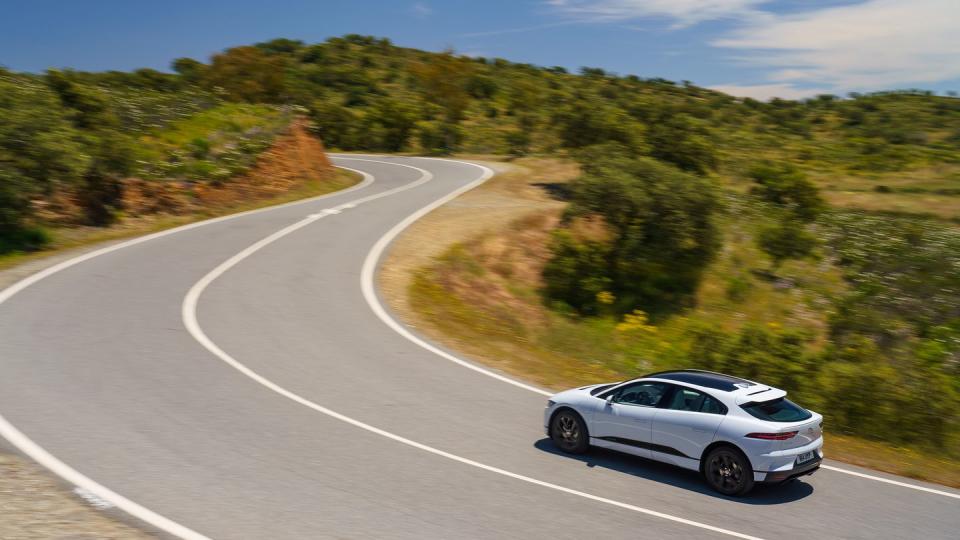
Also like Tesla’s Model X, the I-Pace is all-wheel drive, with Jaguar-designed electric motors at each axle offering 394 hp and 512 lb-ft when combined. While not as neck-snappingly quick as Tesla’s Ludicrous-mode, it's respectably punchy, running from 0-60 mph in a quoted 4.5 seconds. These motors are a permanent magnet synchronous design; all you really need to know about that is they're more efficient-and more expensive-than traditional induction-type motors. The all-wheel drive system is, effectively, digital, capable of instantly deploying power wherever the car's Vehicle Supervisory Control (VSC) system determines it's needed, with absolute precision.
All this, combined with sticky summer tires on our testers, meant one thing-loads of grip. Wherever we drove the car-on road, track, or even gravel and dirt-the I-Pace was seemingly incapable of breaking traction. In a fit of less-than-wise judgement, I even tried flooring it with traction-control off on a loose surface, and still, nothing. The I-Pace just lunged forward, as if on a prepped drag strip.
Braking is interesting-a mix of great, and disappointing. Its motors are capable of regenerative braking, offering up to 0.4gs of negative acceleration while sending energy back into the battery pack. Lift your foot off the left pedal and the car will decelerate a lot more quickly than an internal-combustion car with engine braking. If you've driven an electric car before, this sensation will be familiar; if you haven't, it'll be disorienting. You'll probably want to go into the car's menus and switch it to a less-aggressive setting.
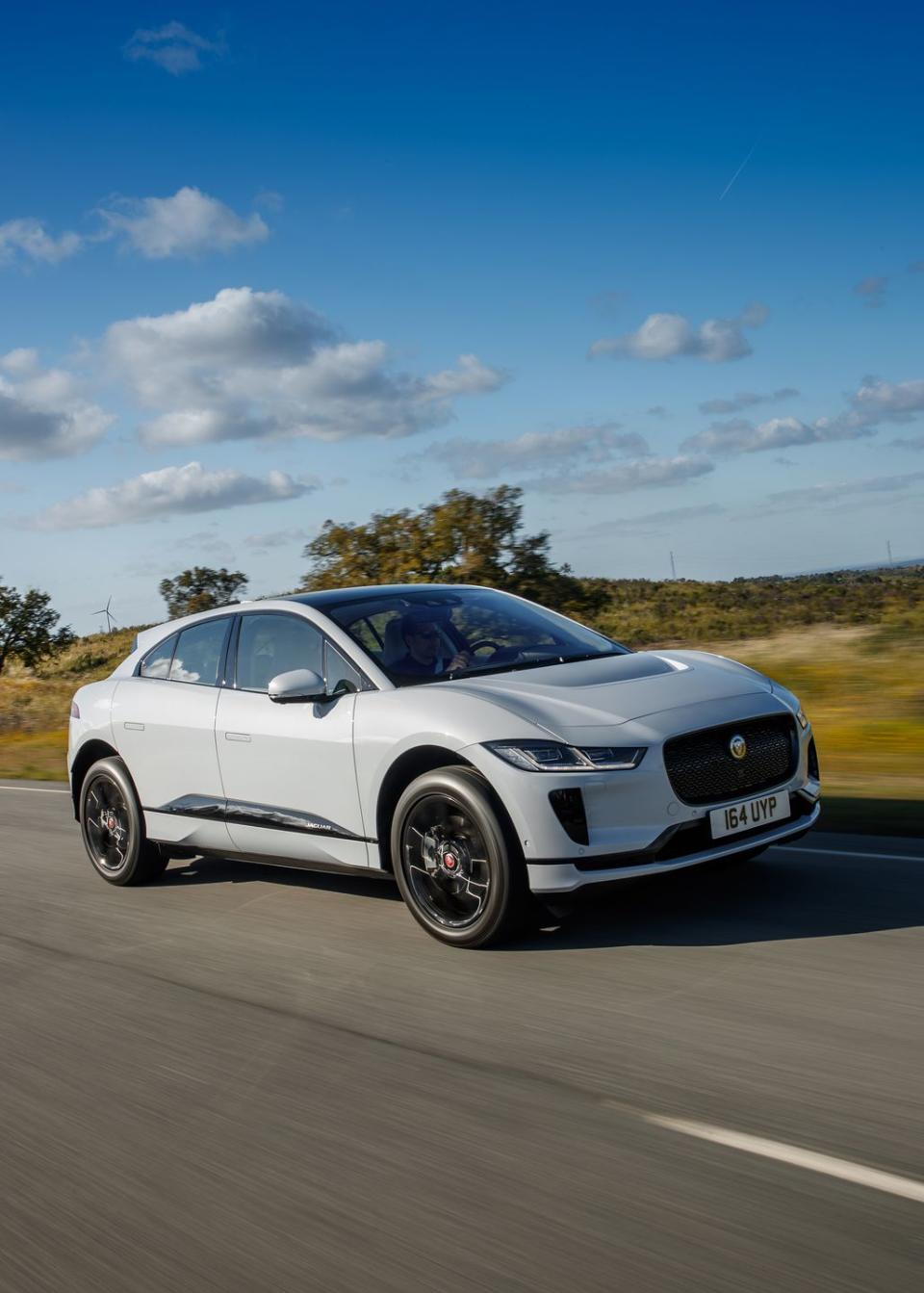
You shouldn't. Using regen may require precise pedal control, but it only takes a few miles to get used to it. Regen also provides an interesting driving experience. It helps you quickly shift weight to the front axle for better turn in and grip through corners. It's like automated left-foot braking. And when driving a twisty road at reasonably brisk speeds, you come to rely on the regen for nearly every corner, only using the brake pedal for the really tight stuff.
There was one section of road where everything clicked. With its beautiful chassis tuning, ample power, instant torque, precise steering, and regenerative braking, I got into a lovely flow with the I-Pace. You can drive it in a way that's completely incongruous with its size.
My only dynamic criticism is leveled at the actual brake pedal. It's a by-wire pedal designed to help blend regenerative and traditional friction braking, and it doesn't feel natural. The pedal effort is too light, and there's a lot of travel before the brakes really seem to bite. They never let me down, it's just that the pedal was spooky.
The I-Pace isn't as involving as a good internal-combustion car, however, I don't think you can expect it to be. When you get rid of the engine, there's less for you, the driver, to interact with–even if there is a sound to synthesize an engine "note." That makes it the sort of car you'd be very pleasantly surprised by on a back road, not one you'd wake up early to take out on a Sunday morning. That's ok. This isn't a sports car-it's an impressively sporty electric SUV.
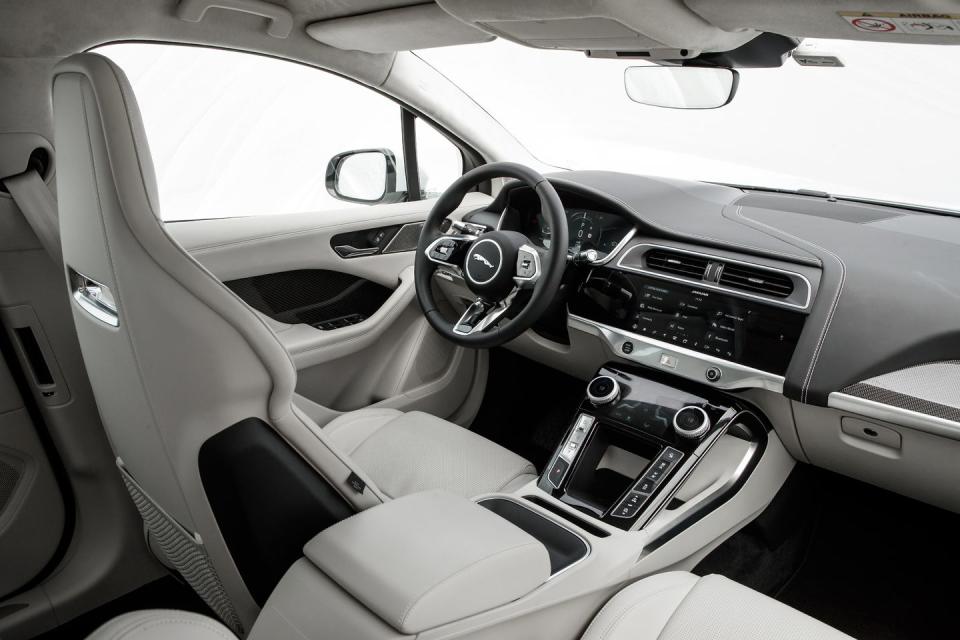
Crisp, engaging dynamics aren't a huge surprise from Jaguar. The XE, XF, and F-Pace all drive really well. . . and unfortunately fall down in other ways. With those cars, you get the sense that Jag spent all its money on the chassis and exterior styling at the expense of everything else. Thankfully, that's not the case here. The interior feels spacious and well-built, and trimmed with all sorts of luxurious materials in our highly optioned test cars. The interior design is special too, finally displaying some of the panache missing in the XE, XF, and F-Pace and matching the wild exterior.
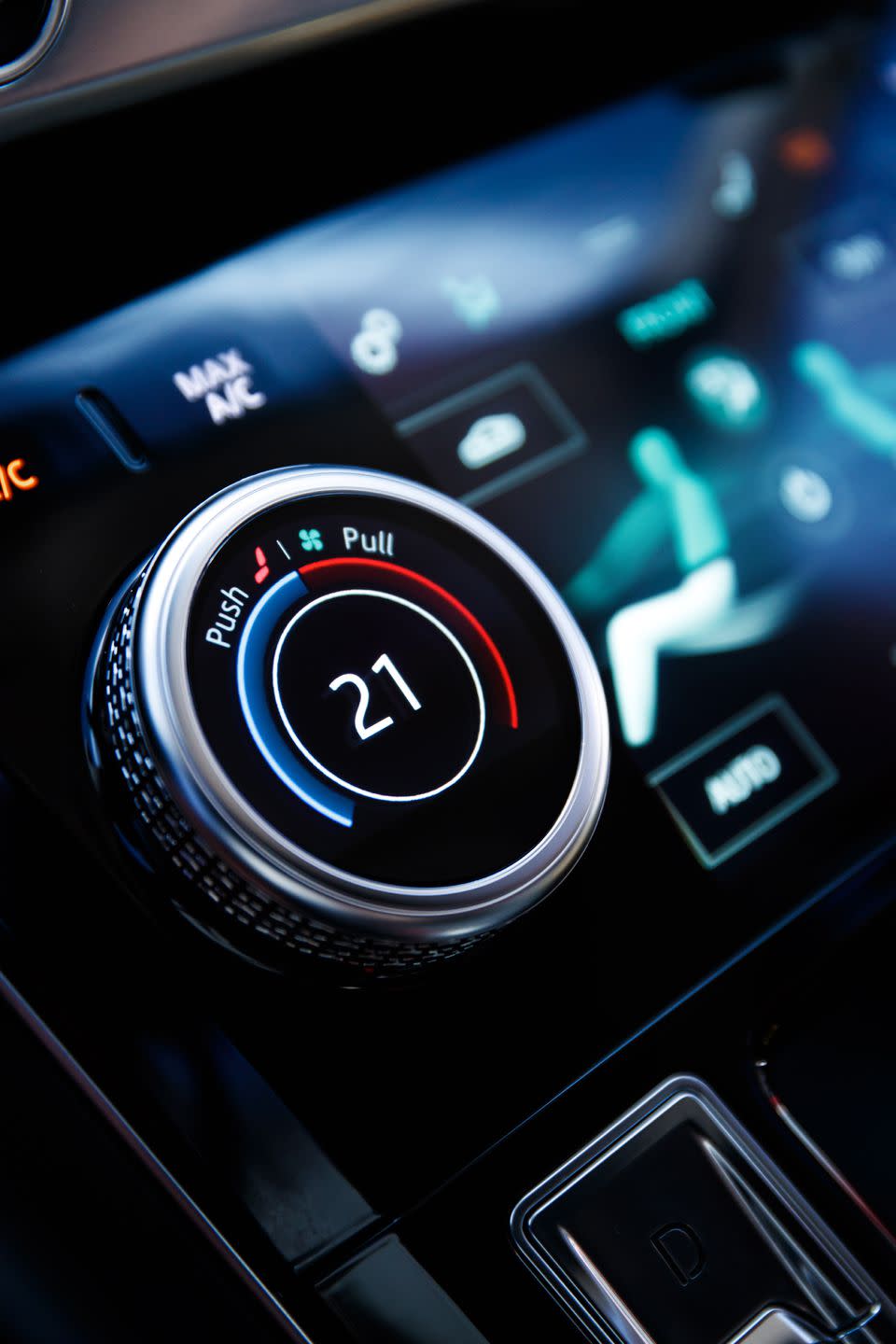
There are screens everywhere too-a big one for infotainment and car settings, a smaller one flanked by two physical knobs for HVAC controls, and a digital gauge cluster you can reconfigure to your tastes. It doesn't feel quite as The Future-y as what you'd get in a Tesla, but knobs are easier to use, and therefore better. Occasionally, it feels like the car doesn't quite have the processing power to keep up with all that's on the screens, with gauge-cluster needles showing noticeable latency. In testing, however, we didn't have any of the major issues we've seen with other Jaguar systems.
On the highway, there's a noticeable amount of wind noise as speeds rise, though I think that's mainly down to air rushing through the hood duct and over the roof of the car. The fact that there's no engine also contributes.
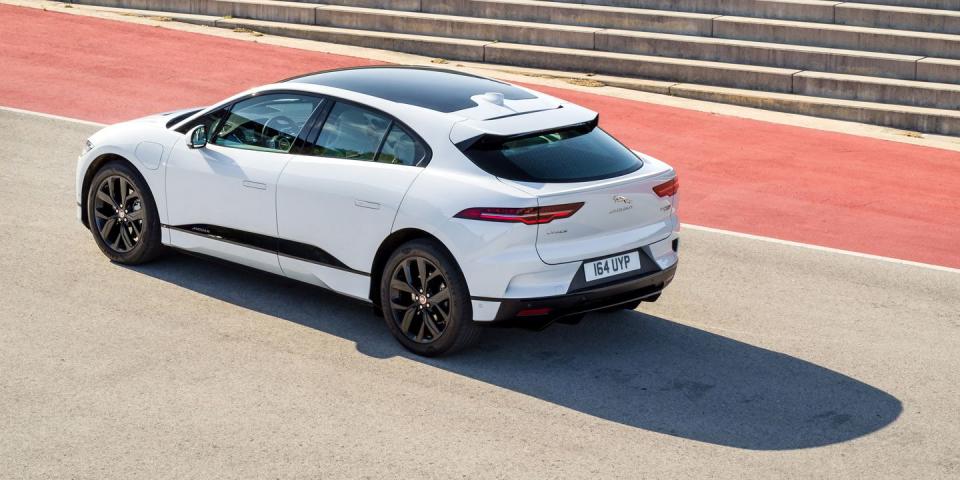
We really ought to take a step back and appreciate what we have here-this is a truly new car, charting a bold path forward for Jaguar and the car world in general. That came into focus in a conversation with Simon Patel, one of the led powertrain engineers for the I-Pace. If you were hiring someone to help develop an internal-combustion car, Patel said, the job description would be something like "we want a person with ten years experience doing this, and proven deliveries of at least two products cycles.
"But with an electric car, those people don't exist, because there hasn't been two product cycles."
Patel's a perfect example. Before being tapped for the I-Pace program four years ago, he was running powertrain development for the F-Type and the F-Pace. Both of which are traditional internal-combustion cars. Like so many other people involved with it, the I-Pace was Patel's first electric car.
In our conversation, I noted that it was interesting that he came directly from the world of internal-combustion to this, diving headfirst into a very different challenge.
"That's the only way it could happen, if you think about it," he replied. "I don't think there's, like a degree course you can go and do in electrified cars yet, because they're new.
"Maybe in a year or two, they'll start teaching those kinda things, and then you can come out of a university with a degree, but there isn't a massive pool of people out there who have delivered a full battery-electric car."

That brings me back to the E-Type.
When it was launched in 1961, Jaguar was at the peak of its powers-not needing to assert itself as a serious luxury competitor. Everyone knew and agreed that it was one of the best automakers in the world.
Since then, Jaguar's had moments of glory, though none with quite the same impact as the E-Type. None of its cars have been truly new. And look at Jaguar's current lineup, all of its sedans and SUVs are quite conventional, aimed at all the other luxury cars on the scene, and its F-Type is just a modern take on the original E-Type. A lovely thing, but even Burgess admits "it's a conventional front-engine, rear-wheel drive sports car."
There was no way this could be the case with the I-Pace. Other than Tesla, there isn't much else out there to measure the I-Pace up against. It feels bold and fresh.
Ian Callum said to his team "I want Jaguar design to return us to the cutting edge of car design. I want us to be the leaders that Jaguar was when they created that E-Type," according to Burgess. With the I-Pace, Jaguar has accomplished it. It might look totally different than an E-Type, but it's just as radical. The I-Pace is the most exciting, innovative car Jaguar has made since 1961, and it has the dynamics and look to back it up.
Malcolm Sayer would dig it.
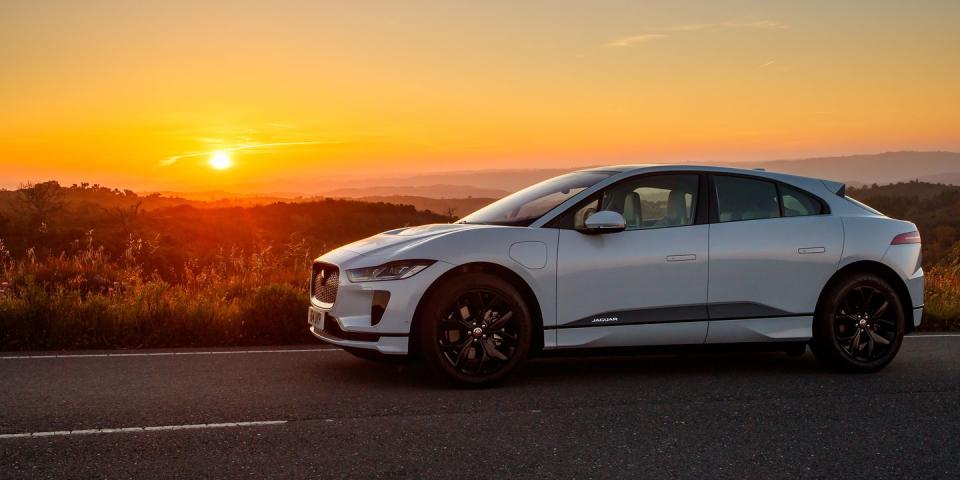
You Might Also Like

 Yahoo Autos
Yahoo Autos 